Sunni Cleric Calls On Islamic Republic To Respect Women’s Rights
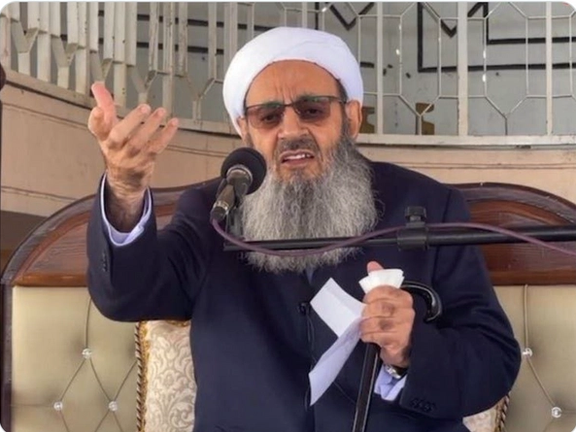
Zahedan has been a scene of regular protests for the past several months with its Sunni cleric Mowlavi Abdolhamid delivering Friday prayer sermons decrying regime atrocities.

Zahedan has been a scene of regular protests for the past several months with its Sunni cleric Mowlavi Abdolhamid delivering Friday prayer sermons decrying regime atrocities.
April 7 was the 27th Friday in a row that the people of Zahedan held demonstrations in support of the “Women, Life, Liberty” movement after listening to Friday prayer sermons by Abdolhamid, who has proven to be the unofficial voice of the country’s Sunni population, constituting approximately 10% of Iran's 88 million population.
While the regime had shut down the internet in the city again, its citizens held another round of rallying, which was held in silence again to respect the holy month of Ramadan.
Abdolhamid’s speech on Friday was mainly themed around the crackdown on the women who reject the Islamic Republic”a mandatory hijab rules and the mismanagement in the country that has led to serious economic woes.
While recommending women to “respect” hijab laws, he said that Iranian women are "angry because they feel that their rights are not respected."Abdolhamid claimed that women are respected in Islam and different cultures, adding that "violent confrontations" with women by the police and hijab enforcers will not bear positive results.
Implicitly referring to the recent détente between Tehran and Riyadh, he said that the internal developments of the country are “10 times more important” than foreign relations. The government must "establish a relationship with its people," he added.
The Sunni majority city’s top cleric also repeated calls for the release of political prisoners and investigation into the killing of protesters in the Sistan-Baluchestan province, especially on the September 30, 2022, often called the Bloody Friday.
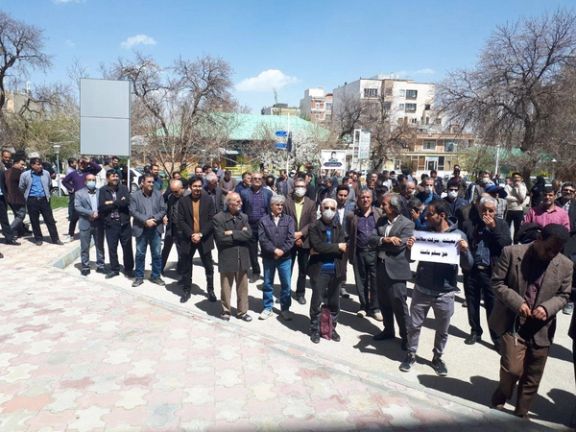
Iran's security forces Thursday violently attacked teachers’ protests in Tehran and Karaj, detaining several some of whom were reportedly freed a few hours later.
According to citizen reports on social media, hundreds of police who were present in Tehran since morning outside and around the ministry of education violently prevented teachers from convening and holding their rally.
“At first around 500 uniformed police blew in their whistles together to disperse the teachers … Plainclothes agents and the police pulled women’s hair and dragged them to their vans and beat up several men and women,” a teacher told the Iranian Teachers’ House (ITH), adding that those who intended to join the rally were either dispersed or detained in the streets nearby and there were only between 200 to 300 outside the ministry.
ITH said the release of all detained teachers had yet not been confirmed. “Such brutality against teachers who have thus far protested in the most civil and dignified manner is highly regrettable and a shame for the authorities and the vicious plainclothes agents and police who are against the people,” ITH said while stressing that teachers will continue their protest action in the future.
Teachers chanting outside the education department of Robat Karim
Security forces also managed to prevent a rally from forming in the city of Karaj, capital of Alborz Province. According to teacher’s account published on the Telegram channel of the Coordination Council of Iranian Teachers Trade Association (CCITTA), security forces clashed with teachers most of whom were women and arrested a male teacher. They would not even allow anyone to stop by the side of the street, one of the teachers said.
In some other cities including Kermanshah, the capital of, Kermanshah Province, Hamedan and Malayer in Hamedan Province, Neyshabur in the northeastern Khorasan-e Razavi, and Robat Karim to the south of Tehran teachers managed to hold their rallies.
In these peaceful rallies teachers chanted their demands including the release of Mohammad Habibi, spokesperson of Iranian Teachers Trade Association and other colleagues.
Habibi was sent back to prison Wednesday less than two months after being released on Supreme Leader Ali Khamenei’s partial amnesty of protesters and some activists. According to his family, he was taken from the school where he teaches to his home and taken away to prison. His wife Khadijeh Pakzamir said in a tweet Thursday that in a phone call from Tehran’s Evin prison, Habibi said security forces had assaulted him in the vehicle on the way to prison.
Teachers demanding the release of Mohammad Habibi outside the education department of Kermanshah
In Ahvaz, the capital of the southwestern Khuzestan Province, protesting teachers who were joined by some parents also protested against the continued poisoning of schoolgirls and the ministry’s threats against students over compulsory hijab.

In a statement Tuesday, the ministry said students who do not comply with the compulsory hijab rule will not be allowed to attend classes. Similar threats have been made against university students.
Earlier this week, Teachers’ trade associations called for rallies outside the ministry of education in Tehran and education departments in other cities Thursday to protest the ministry’s failure to address their long-held grievances over paygrades, low salaries, and the government’s failure to pay their wages before March 21 when the Iranian New Year Holidays began.
The minister of education Yousef Nouri resigned Monday amid widespread discontent for the delay in the payment of salaries, apparently due to lack of proper coordination with the Planning and Budget Organization over the payment of approved raises.
Teachers have threatened to stage street protests in May if their demands are not met.

Echoing recent remarks by Iran’s ruler Ali Khamenei, judicial authorities say those who oppose compulsory hijab rules are in league with intelligence agencies of ‘enemies’.
Two days after Khamenei’s assertion that flouting hijab is “religiously and politically haram,” Iran's Chief Justice Gholamhossein Mohseni-Ejei said women and girls who are not willing to abide by the mandatory Islamic dress code regulations and appear in public without headscarves are "linked to foreign spy agencies".
Without providing any documents to prove his claim, he said, "Today, the enemies are advancing their conspiracies in various ways and plan to fuel deviance in our society."
Threatening those who defy hijab rules with stricter punishment, he said that “the enemies are trying to tie the hijab issue to politics.” Earlier in April, he warned of strict punishment for women flouting hijab rules.
Also on Thursday, Mohammad Mossadegh, the first deputy head of the judiciary, warned, the judiciary “will deal seriously with the enemies and norm-breakers who cooperate with the spy services in promoting unveiling in Iran."
Alireza Panahian, a spokesman of Khamenei’s office and the head of the Supreme Leader's think tank for universities, supported the sentiments, saying "We must make a change in our religious teachings, this situation is no longer tolerable when we see this amount of religious aversion in the society.” However, he added some balance by asserting that atheism in society is not prevalent, and that “people have not revolted against religion.”
The remarks came following Khamenei’s Tuesday speech, during which he claimed that foreign intelligence services were encouraging Iranian women to disobey mandatory hijab.

Iranian journalist and activist Hossein Razzagh, imprisoned in Tehran's notorious Evin prison, has had his sentence extended by four years.
Razzagh’s twitter account published an update on Thursday that Branch 26 of the Revolutionary court has issued a new sentence on charges of “conspiring and colluding with the intention of disrupting the security" of the country and "propaganda against the system.”
The charge of disrupting security was because of Razzagh’s managing a popular room on the social audio app clubhouse, and the charge of propaganda against the regime is for his open support for the Baha’i community, one of the most persecuted religious minorities in Iran.
The brave political activist was arrested by security forces in the northern Iranian city of Amol on August 21, less than a year after his release on $67,000 bail (20 billion Iranian Rials at the time) for his previous criticism of the regime.
Another charge against him was “publishing lies with the intention of disturbing the public mind," which he is accused of for tweets defending Sepideh Rashno, a woman who was arrested for protesting mandatory hijab rules before the death in custody of Mahsa Amini.
Razzagh, who has been detained many times in recent years, was one of the founders of a virtual chatroom in the clubhouse called "Freedom Square," where participants were critical of the regime. He claims he was forced to remove the room from the platform under pressure and threats by the Intelligence Ministry.
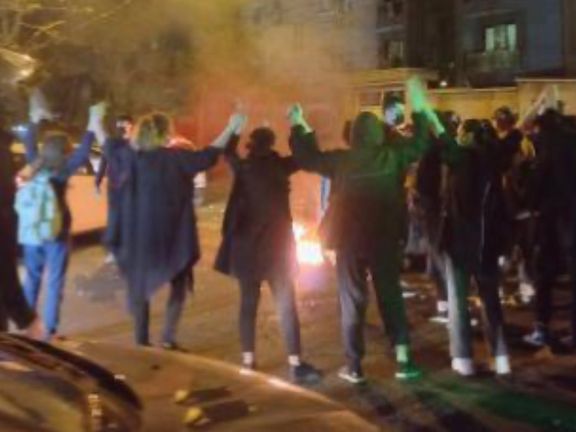
Fresh antiregime rallies took place Wednesday night in the Iranian capital Tehran as people gathered outside the home of one of the protesters killed by the Islamic Republic.
A large crowd of Tehran residents staged a demonstration in the Shahre-Ziba neighborhood, on the birthday anniversary of Hamidreza Rouhi who was killed by the security forces’ live fire on protesters on November 18, 2022. Scenes in the streets were reminiscent of protests last year, invigorating activists.
Following the Wednesday night protests, Hamidreza Rouhi’s father was reportedly arrested on Thursday.
The earlier nationwide protests gradually decreased as the regime killed more than 500 people arrested at least 20,000 others.
Rouhi, a university student who had a modeling career since childhood, was a popular teen with many friends in his neighborhood. He was killed during street protests after he was shot with three bullets.
Rouhi was one those protesters whose death touched a lot of Iranians, with his funeral procession and services for his third, seventh and 40th day after his death also morphed into big protest rallies.
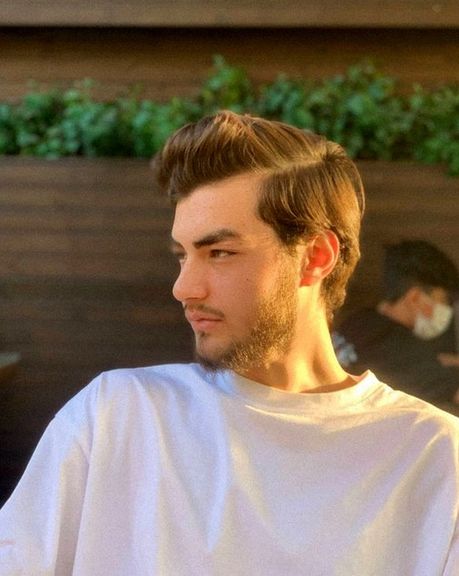
The 40th day after someone’s death carries immense religious and cultural significance in Iran where memorials are held on days three, seven, and forty after death. There is also a historical parallel in the events leading to the 1979 revolution when 40th day memorials invigorated the revolutionaries and their protests.
On Wednesday night, people blocked Shahre-Ziba's main boulevard and set up fires in the middle of the street to stop the deployment of security forces. Soon after videos and news of the protests in the neighborhood surfaced on social media, people in some other parts of the city also held protest rallies, chanting the main slogans of the ‘Women, Life, Liberty’ movements as well as many directly against the regime’s ruler Ali Khamenei.
The rallies were the biggest in the new Iranian year – which started on March 21, indicating that the protest movement has not faded away, despite the propaganda by the authorities who had claimed “the riots” would not reoccur.
In addition to singing songs of the revolution and chanting slogans, women also removed their hijab and moved around bonefires during the Wednesday night gatherings, according to social media videos.
Since 22-year-old Mahsa Amini was beaten to death by hijab enforcers in September 2022, sparking a nationwide revolt, the simple act of unveiling in public has become a common occurrence across Iran, and a thorn in the side of the regime hardliners who are pushing for stricter measures.
Supreme Leader Ali Khamenei’s assertion Tuesday that flouting hijab is “religiously and politically haram” has prompted officials to signal harsher crackdown on those who unveil in public.
Following Khamenei’s cue, the ministry of interior in its second statement on hijab within a week, alleged that the opposition to compulsory hijab was an enemy plot advanced by foreign intelligence services and the opposition outside Iran, who through social media are trying to use it to “create deep social divides and a divide between the people and the government.”
The unrest since Amini’s killing by the police has made it increasingly difficult to enforce the mandatory Islamic dress code which has become a symbol of opposition against clerical rule.
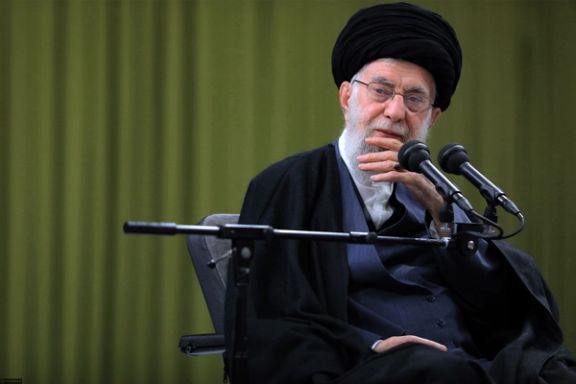
Iran’s Supreme Leader Ali Khamenei has once again attributed the anti-hijab protests to “enemies” abroad.
In his latest rant, he claimed this mysterious entity intends to target the intellectual strengths of the Islamic Republic by “weakening women's modesty”.
In a gathering of poets affiliated with the regime on Wednesday, without referring to the Women, Life, Freedom movement, Khamenei attributed the civil disobedience of women to “Westerners”.
He said they “have no [genuine] pity for Iranian women nor do they have any respect for their rights. Rather, they have a grudge against Iranian women and falsely present themselves as supporters of freedom and women's rights.”
He went on to say that “the West is not worthy of being the one to talk about human rights at all” claiming that "Right now, women in Western countries have the most complicated problems; [even] more than other countries."
During the recent unrest, women have been on the streets burning headscarves, cutting hair, dancing in public centers, and appearing without the clothing approved by the regime in defiance of the regime.
In the past months, the Supreme Leader and officials of the Islamic Republic have repeatedly tried to link the nationwide protests to foreign countries.
Despite the claim of the authorities about respecting women's rights in Iran, the government policies are based on reducing women's social responsibility to "wifery and housekeeping" and any protests in this regard are harshly suppressed.